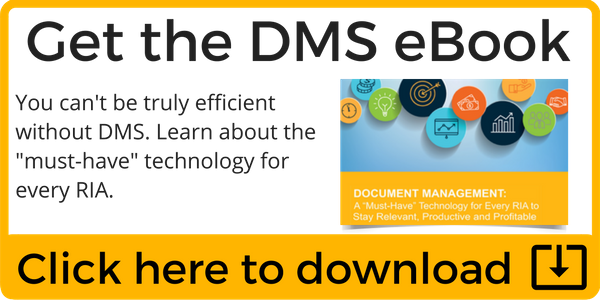 When it comes to regulated documents, being stuck in a paper world is less than ideal. Let’s face it, it’s really just inefficient. It takes too long to find the content you need, there are no back ups, it’s hardly secure, and the list goes on. But isn’t that exactly why we have technology? To make our lives easier? If you’re frustrated with your firm’s current system, it’s time to step into the future.
When it comes to regulated documents, being stuck in a paper world is less than ideal. Let’s face it, it’s really just inefficient. It takes too long to find the content you need, there are no back ups, it’s hardly secure, and the list goes on. But isn’t that exactly why we have technology? To make our lives easier? If you’re frustrated with your firm’s current system, it’s time to step into the future.
Your firm has probably considered the idea of a document management system (DMS), but maybe they just haven’t pulled the trigger. This is understandable, as there are so many factors to consider when it comes to an investment like this. That’s exactly why we’re going to help you break it down.
There are two aspects to think about when buying a document management system:
- How much of a system should you buy?
- How much help do you really need?
To answer these questions, you need to develop your must-have list.
Think of purchasing your DMS like house shopping. When house shopping, savvy shoppers list out features that are important to them, such as “commute time to work,” or “plenty of storage” before they ever view their first house (e.g., do their first DMS “demo”).
Further, smart home buyers rank their feature list in terms of priorities, or “must-haves” versus “nice-to-haves.” For example, “In our new house, we must have a sizeable kitchen pantry and a two car garage.”
Just like buying a house, list each of the problems you need your DMS to address, and match your DMS compared to that problem set.
Let’s provide concrete examples to illustrate how easy it will be to create your firm’s DMS criteria list.
Simply use this two-step approach.
- First, think about everything you don’t like about your current document management, retention, and document collaboration approach, and then convert those issues into requirements.
For example, “In our current folder tree, everyone complains that no one files the same way. Our new Document Management System must be rule-based so everyone saves documents consistently.” Notice the “must.”
- Then, either rank each issue using a 0-to-5 scale based on priority, or, even simpler, identify which requirement is a must-/nice- to-have.
Not only does a list like this give you a yardstick against what to objectively evaluate any DMS, it also points out which aspects you are not willing to compromise.
When it comes to evaluating DMS providers, you are less likely to be swayed by a BSO (Bright Shiny Object) of what a salesperson highlights and be more likely to stick with the fundamentals of what is most important to your firm—just like an amazing entryway won’t sway you into buying a home that is too long of a commute.
It’s important to make the right decision when choosing your firm’s DMS. For more guidance on DMS options and the benefits of DMS, download our free eBook Document Management: A “Must-Have” Technology for Every RIA to Stay Relevant, Productive and Profitable.





